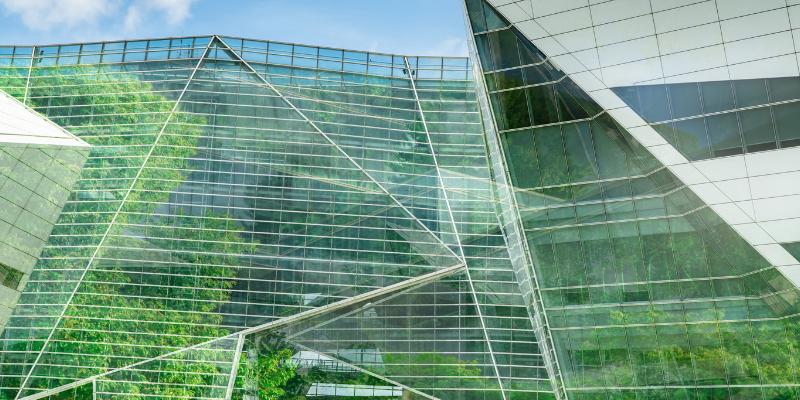This is an era of rapid technological advancement; it is crucial to make these technological sustainable. The integration of eco-friendly practices into IT infrastructure. One way to integrate this sustainable modernization is the use of the Green It analyzer on the Amazon Web Services, AWS platform. Let’s understand some of the key terms that are crucial to understand it.

The term ‘sustainable modernization’ refers to upgrading and improving technology systems with a focus on sustainability. It involves making changes that are environmentally conscious and efficient. It is modernization but a more eco-friendly one.
Green IT Analyzer: This is a tool or solution that helps analyze and optimize the environmental impact of IT operations. It often looks at factors like energy consumption, resource efficiency, and overall environmental sustainability.
AWS (Amazon Web Services): AWS is a cloud computing platform. In this context, it suggests utilizing cloud services provided by Amazon to host and manage IT infrastructure. Cloud services can be more energy-efficient and flexible compared to traditional on-premises solutions.
Enter Green IT Analyzer on AWS:
At the forefront of this movement is the Green IT Analyzer, a platform designed to catalyze sustainable practices within IT estates. When seamlessly integrated with AWS, it empowers organizations to measure, analyze, and optimize their carbon footprint across hybrid cloud environments comprising private data centers, public clouds, and user devices.
Following are the key features and capabilities of Green IT Analyzer and how they help in accelerating a sustainable modernization with the help of AWS ( Amazon Web Services):
The Green IT analyzer provides companies with a comprehensive overview of the carbon footprint emission caused by various company IT activities. These activities include running servers, sharing data, using computers, etc. When companies get a comprehensive Carbon Footprint Analysis, they get an overview of how much their IAT activities impact the environment directly. When you see the extent of harmful effects visually, you understand how crucial it is to form a solution.
Understanding the impact of the carbon footprint and its effects requires great detail. This is called granular insights, like zooming in on a picture to see each tiny part. VM stands for Virtual Machine, like a virtual computer running on a real computer.
Now, the next question that arises is how the granular and VM level insights help to understand the carbon impact better. Instead of looking at the big picture, the tool dives into each virtual machine and its granular details. It’s like not just knowing your total expenses but also knowing exactly how much you spend on groceries, utilities, etc. This helps to figure out how much your computer activities affect the environment in terms of carbon emissions.
The Green It analyzer offers a single broad interface that provides a comprehensive and interconnected display of various data sets and information related to the particular organization’s carbon footprint in its IT operations.
This unified Dashboard helps get a better and deeper understanding of the data and the interconnected factors within the IT ecosystem. This helps to design better solutions by understanding the problem better.
The platform employs a location-based methodology to give complete, efficient, and personalized data. It aligns with principles for the information and communication technology sector. Companies get data on their carbon emission and their impact on the area in which they operate. This approach ensures accuracy in assessing carbon emissions, considering factors such as power usage effectiveness (PUE) and carbon intensity (CI) based on the energy source. It gives a better overview of these companies, and they are more conscious about their carbon emission.
Road maps are a great way to know about your progress and the specific things you need to do in order to achieve your goal. Armed with insights, organizations can craft a tailored optimization roadmap. This roadmap aligns with broader sustainability objectives, guiding the implementation of changes that lead to lower energy consumption and reduced carbon emissions. These road maps provided by the Green IT Analyzer are very helpful for companies to achieve their goals of sustainable modernization.
Sustainable modernization involves upgrading technology systems with a focus on environmental consciousness and efficiency. The adoption of eco-friendly practices in IT infrastructure brings forth several benefits, aligning with both environmental and operational goals. Here are the key advantages of sustainable modernization:

In conclusion, the integration of Green IT Analyzer with AWS is a big step toward making technology more sustainable. This partnership helps organizations understand and reduce their environmental impact in IT operations. By using the Green IT Analyzer, companies can see how much their activities affect the environment and create plans to be more eco-friendly. This not only makes the transition to eco-friendly practices smoother but also guides organizations to be more efficient and responsible in their IT journey. It’s a positive move towards a future where technology and the environment work hand in hand.

By Triston Martin/Apr 27, 2024

By Madison Evans/May 22, 2025

By Triston Martin/Mar 12, 2024

By Lucy Lee/Apr 06, 2024

By Susan Kelly/Apr 21, 2024

By Triston Martin/Apr 08, 2024

By Susan Kelly/Mar 11, 2024
By Eleanor/Nov 09, 2024

By Eleanor/Jan 06, 2025

By Frederica/Apr 14, 2024

By Pamela Andrew/Oct 20, 2024

By Pamela Andrew/Apr 02, 2025